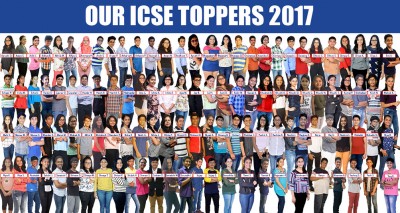State Board Commerce (XI-XII) - Test Papers
Why do we Celebrate Gudi Padwa/Ugadi
Facts, Significance, and Importance
India is largely an agricultural country where most of the festivals are typically related to the beginning and finish of agricultural seasons. Similarly, Gudi Padwa marks the same rituals that it is celebrated just after the end of the Rabi season. This festival is related to the prosperity and well-being that’s why in this day everything looks bright and vibrant. Also, people wear traditional garments on Gudi Padwa.
Gudi Padwa (also Gudi Padva) is one of the famous Hindu festivals that marks the beginning of New Year as per a Shalivahan Shaka. It is a harvest festival which is celebrated with utmost fanfare and grandeur not only Maharashtra but also in other parts of India such as in the states of Karnataka and Andhra Pradesh.
‘Ugadi’ which is the famous festival of Andhra Pradesh and ‘Yugadi’, the festival of Karnataka are the same festivals but both are pronounced differently in the respective regions. The day also marks the beginning of Chaitra Navratri according to the lunisolar Hindu calendar, that leads up to Ram Navami, Lord Rama’s birthday to be celebrated on a ninth day. This year the festival will be celebrated on March 18, 2018, because Navratri is also starting from this day.
‘Ugadi’ is considered extremely auspicious as it is believed that on this very day Lord Brahma had created the universe which marks the beginning of the Satyayug that’s why devotees take a sacred oil bath, which is considered auspicious. This day is also celebrated to mark the coronation ceremony of Lord Rama. Lord Rama returned to Ayodhya after spending fourteen years in exile.
People also decorate their homes with Mango Leaves and special Rangoli which are made in front of the house or in a courtyard. People also take time to wash their homes during ‘Ugadi’. Old and useless objects are discarded. The main entrance or the doorway is decorated with a ‘toran’ and for the puja, the Gudhi (Lord Brahma’s flag –Brahmadhvaj) is hoisted. Also, everyone in the family wears new clothes and celebrate the festival by wishing each other.
‘Ugadi’ literally begins on a bittersweet note with the eating of a specific mixture called Bevu-Bella which consists of the Neem and Jaggery. It symbolizes that life is a mixture of both good and bad, Happiness and Sorrow. It teaches us that we must accept both happiness and sorrow with equal openness.
Practically the celebrations are often linked to the change in season and to the sowing and reaping of crops. This day marks the end of one agricultural harvest and the beginning of a new one. The Gudi Padwa or Ugadi is thus celebrated at the end of the Rabi season. Also, in this day there are many delicious dishes and desserts are made where the making of “Puran-puri” is a custom on this day.
Also, the making of dishes varies state-to-state where Maharashtrian make and eat Sakkar Bhaat (sweet rice), Shrikhand and Puri and Puran Poli on this day and the Konkanis make Kanangachi Kheer which is a sweet dish made of sweet potato, coconut milk, jaggery, and rice.
This day is also believed to be auspicious for ‘vaastu puja’ and for beginning new business ventures. On this day, several processions are also taken out. In this day, the families get together and the people visit their old friends. Also, the people, who stay away including out of the country and those who do not meet relatives throughout the year express well-wishes through phone calls to their relatives and friends.
How to Crack NEET in 60 Days
Many students find NEET; the National Eligibility cum Entrance Test, the most challenging examination of all entrance tests. NEET Exam 2018 seems far away, but it is actually near. To pass NEET Exams 2018 requires a lot of planning and strategizing because lack of strategies will render one’s effort useless in the long run. It is no use to go sit with a question paper in front of you yet you are not prepared enough to handle the paper well. If you plan for NEET exam 2018 very effectively, then you are assured of passing with flying colors and graduating to the next level.
How to do it in just 60 days
The happy news is that that NEET Question Paper is just like any other paper you have appeared for earlier. In fact, doing it within a very short period of time is possible. NEET Exam 2018 is so far yet so near and so with 60 days, you need a strategy. For instance you may decide to subdivide this time resource into two portions or even three potions. The first portion may consist of 20 days.
The first 20 days preparation for NEET Exam 2018
You can decide that it is a period of reading through relevant text books with the aim of ensuring that you have an extensive coverage. You never know where the NEET Question paper will draw its questions from and so you need to review the textbooks extensively. Alternatively, if you have access to video lectures it will be easier to go through the lectures of those topics that are relevant and important. Remember to make notes while watching.
The Next 20 Days
The middle portion of 20 days may be useful when trying to assess How the NEET 2018 questions will be set. You can simply do this by looking at the previous NEET Question Papers. Past papers say a lot about the topics from which questions will be set. Question that were set during previous NEET exams will probably have a lower chance of appearing in the NEET Exam 2018 so you can concentrate on those questions that have never appeared in at least 2 consecutive periods. This should take care of at least three-quarters of the questions of the NEET question paper. However, you have to be careful not to overlook those questions that have been repeated more often in previous NEET exams.
Attempt the previous question papers and continuously assess yourself on the topics that you are confused with or do not score well. Go back to your notes, or textbooks or video lectures of those topics once more carefully. By the end of this period you should have a clear idea about the topics that you are good in and the ones you are really bad in. You should now decide if you can drop certain topics that you are bad in so that you can give full attention to the ones you can cover easily and the ones you are good in. So calculate the score of the topics you have chosen so that you know if you should add a certain topic to make a healthy score.
The Final 20 Days
Once you have decided the topics you will be concentrating on completely the last 20 days can be used for assessment. Attempt Mock Tests Left, Right and Center. See if you can answer questions completely, partially or not at all. In the event that you find that you are able to answer 80% of questions then you can rest assured that you have been able to crack NEET 2018 Exam. There are some online Mock Tests like RoboChamps Test Series that give you instant results and analysis about your strengths and weaknesses. Many coaching classes publish mock tests near exam time that are free to use. You have to be careful when you choose them because they are usually gimmicks for marketing, but of no use in practice.
Topics to concentrate on in the three subjects
Physics
Get your concepts clear for topics such as Kinematics, Gravitation, Fluids, Heat & Thermodynamics, Waves & Sound, Capacitors & Electrostatics, Magnetics, Electromagnetic Induction and Optics & Modern Physics,
Chemistry
Get used to the periodic table and inorganic chemistry. Practice as many numerical-based questions as possible. Topics such as Coordination Chemistry & Chemical Bonding in Inorganic Chemistry, Electrochemistry, Chemical & Ionic Equilibrium, Mole Concept in Physical Chemistry and Organic Chemistry should be clear.
Biology
Includes two parts, botany and zoology. Topics such as Human Physiology and Plant Physiology are important are carry maximum weightage. Take care in this section since the pattern changes every year.
Good Luck.
How to Crack JEE Main within 30 days
It is undeniable that time is running out as far as the JEE Main Exam is concerned. This means that there is little or no time to waste. Everybody is struggling to utilize even the shortest time possible with the aim of ensuring success over the cut-off point. JEE is the basis of success for the future engineers in this country. Failure to pass the JEE Main Exam does not mean the end of your engineering journey, but it can be perceived as one did not prepare as expected. It might surprise you when someone says that it is possible to nail the JEE Main Exam just by preparing thoroughly within 30 days of sleepless nights. Considering that this is the first hurdle, you have to prepare well for JEE Exam.
Set up an attainable and a Manageable revision/Preparation Plan
Do you have a plan on how to go about preparing for JEE? If not, here is a little guidance for you.
First, one must understand that time is the most valuable resource that you have. Planning your time well is the first thing to do during preparation for JEE. You have to consider the whole JEE Main Syllabus before you can partition your time according to the extent of the Syllabus. You must, therefore, divide your time according to the JEE Main Syllabus Requirements.
What to do within the 30 day Period before JEE Main
You must consider the fact that you have to score high in every subject of JEE Main. Physics is one of the subjects that requires comprehensive revision. Grasping the concepts is key, and although you don’t need to bury your head in those hard questions before you sit for the JEE Main exam you should note down the formulae and practice enough questions of Physics before the JEE Main Examination.
Chemistry is also one of the crucial subjects for JEE Main Examination, to ensure that you get good marks in JEE Main, you need to master most of the concepts and the entire syllabus set. The best thing about JEE Main is that textbooks like NCERT are readily available and will help you score a lot of marks. This textbook will help you revisit all the JEE Main Syllabus within a very short span of time.
Use the same strategy for Mathematics as well.
Tap into the Insights of your Peer Group.
Tapping into a peer group can help you get various important points and tips of the JEE main syllabus within a short period of time. This is another factor crucial as far as passing JEE Main Exam is concerned.
Download JEE Main & Advanced Previous year Question Paper
Syllabus of AIIMS 2018 Exam
AIIMS Syllabus will cover questions from Physics, Chemistry, Biology and General Knowledge.
AIIMS MBBS 2018 Physics Syllabus
UNIT I: Electrostatics
Electric charges and their conservation. Coulomb’s law-force between two point charges, forces between multiple charges; superposition principle and continuous charge distribution.
Electric field, electric field due to a point charge, electric field lines; electric dipole, electric field due to a dipole; torque on a dipole in a uniform electric field.
Electric flux, statement of Gauss’s theorem and its applications to find field due to infinitely long straight wire, uniformly charged infinite plane sheet and uniformly charged thin spherical shell (field inside and outside)
Electric potential, potential difference, electric potential due to a point charge, a dipole and system of charges: equipotential surfaces, electrical potential energy of a system of two point charges and of electric diploes in an electrostatic field.
Conductors and insulators, free charges and bound charges inside a conductor. Dielectrics and electric polarization, capacitors and capacitance, combination of capacitors in series and in parallel, capacitance of a parallel plate capacitor with and without dielectric medium between the plates, energy stored in a capacitor, Van de Graaff generator.
UNIT II: Current Electricity
Electric current, flow of electric charges in a metallic conductor, drift velocity and mobility, and their relation with electric current; Ohm’s law, electrical resistance, V-I characteristics (linear and non-linear), electrical energy and power, electrical resistivity and conductivity.
Carbon resistors, colour code for carbon resistors; series and parallel combinations of resistors; temperature dependence of resistance.
Internal resistance of a cell, potential difference and emf of a cell, combination of cells in series and in parallel.
Kirchhoff’s laws and simple applications. Wheatstone bridge, Meter Bridge.
Potentiometer-principle and applications to measure potential difference, and for comparing emf of two cells; measurement of internal resistance of a cell.
UNIT III: Magnetic Effects of Current and Magnetism
Concept of magnetic field, Oersted’s experiment. Biot-Savart law and its application to current carrying circular loop.
Ampere’s law and its applications to infinitely long straight wire, straight and toroidal solenoids. Force on a moving charge in uniform magnetic and electric fields. Cyclotron.
Force on a current-carrying conductor in a uniform magnetic field. Force between two parallel current-carrying conductors-definition of ampere. Torque experienced by a current loop in a magnetic field; moving coil galvanometer-its current sensitivity and conversion to ammeter and voltmeter.
Current loop as a magnetic dipole and its magnetic dipole moment. Magnetic dipole moment of a revolving electron. Magnetic field intensity due to a magnetic dipole (bar magnet) along its axis and perpendicular to its axis. Torque on a magnetic dipole (bar magnet) in a uniform magnetic field; bar magnet as an equivalent solenoid, magnetic field lines; Earth’s magnetic field and magnetic elements.
Para-, dia-and Ferro-magnetic substances, with examples.
Electromagnetic and factors affecting their strengths. Permanent magnets.
UNIT IV: Electromagnetic Induction and Alternating Currents
Electromagnetic induction; Faraday’s law, induced emf and current; Lenz’s Law, Eddy currents. Self and mutual inductance.
Alternating currents, peak and rms value of alternating current/ voltage; reactance and impedance; LC oscillations (qualitative treatment only), LCR series circuit, resonance; power in AC circuits, wattless current.
AC generator and transformer.
UNIT V: Electromagnetic Waves
Need for displacement current.
Electromagnetic waves and their characteristics (qualitative ideas only). Transverse nature of electromagnetic waves.
Electromagnetic spectrum (radio waves, microwaves, infrared, visible, ultraviolet, x-rays, gamma rays) including elementary facts about their uses.
UNIT VI: Optics
Reflection of light, spherical mirrors, mirror formula. Refraction of light, total internal reflection and its applications optical fibres, refraction at spherical surfaces, lenses, thin lens formula, lens-maker’s formula. Magnification, power of a lens, combination of thin lenses in contact combination of a lens and a mirror. Refraction and dispersion of light through a prism.
Scattering of light- blue colour of the sky and reddish appearance of the sun at sunrise and sunset.
Optical instruments: Human eye, image formation and accommodation, correction of eye defects (myopia and hypermetropia) using lenses.
Microscopes and astronomical telescopes (reflecting and refracting) and their magnifying powers.
Wave optics: Wavefront and Huygens’ Principle, reflection and refraction of plane wave at a plane surface using wave fronts.
Proof of laws of reflection and refraction using Huygens’ Principle.
Interference, Young’s double hole experiment and expression for fringe width, coherent sources and sustained interference of light.
Diffraction due to a single slit, width of central maximum.
Resolving power of microscopes and astronomical telescopes. Polarization, plane polarized light; Brewster’s law, uses of plane polarized light and Polaroids.
UNIT VII: Dual Nature of Matter and Radiation
Photoelectric effect, Hertz and Lenard’s observations; Einstein’s photoelectric equation- particle nature of light.
Matter waves-wave nature of particles, de Broglie relation. Davisson-Germer experiment (experimental details should be omitted; only conclusion should be explained).
NIT VIII: Atoms and Nuclei
Alpha- particle scattering experiments; Rutherford’s model of atom; Bohr model, energy levels, hydrogen spectrum. Composition and size of nucleus, atomic masses, isotopes, isobars; isotones.
Radioactivity-alpha, beta and gamma particles/ rays and their properties decay law. Mass-energy relation, mass defect; binding energy per nucleon and its variation with mass number, nuclear fission and fusion.
UNIT IX: Electronic Devices
Energy bands in solids (qualitative ideas only), conductors, insulators and semiconductors; semiconductor diode- I-V characteristics in forward and reverse bias, diode as a rectifier; I-V characteristics of LED, photodiode, solar cell, and Zener diode; Zener diode as a voltage regulator. Junction transistor, transistor action, characteristics of a transistor; transistor as an amplifier (common emitter configuration) and oscillator. Logic gates (OR, AND, NOT, NAND and NOR). Transistor as a switch.
AIIMS MBBS 2018 Chemistry Syllabus
UNIT I: Solid State
Classification of solids based on different binding forces; molecular, ionic covalent and metallic solids, amorphous and crystalline solids (elementary idea), unit cell in two dimensional and three dimensional lattices, calculation of density of unit cell, packing in solids, packing efficiency, voids, number of atoms per unit cell in a cubic unit cell, point defects, electrical and magnetic properties, Band theory of metals, conductors, semiconductors and insulators.
UNIT II: Solutions
Types of solutions, expression of concentration of solutions of solids in liquids, solubility of gases in liquids, solid solutions, colligative properties- relative lowering of vapour pressure, Raoult’s law, elevation of boiling point, depression of freezing point, osmotic pressure, determination of molecular masses using colligative properties abnormal molecular mass. Van Hoff factor.
UNIT III: Electrochemistry
Redox reactions, conductance in electrolytic solutions, specific and molar conductivity variation of conductivity with concentration, kohlrausch’s Law, electrolysis and Laws of electrolysis (elementary idea), dry cell- electrolytic cells and Galvanic cells; lead accumulator, EMF of a cell, standard electrode potential, Relation between Gibbs energy change and EMF of a cell, fuel cells; corrosion.
UNIT IV: Chemical Kinetics
Rate of a reaction (average and instantaneous), factors affecting rates of reaction; concentration, temperature, catalyst; order and molecularity of a reaction; rate law and specific rate constant, integrated rate equations and half-life (only for zero and first order reactions); concept of collision theory ( elementary idea, no mathematical treatment). Activation energy, Arrhenious equation.
UNIT V: Surface Chemistry
Adsorption-physisorption and chemisorption; factors affecting adsorption of gases on solids, catalysis homogeneous and heterogeneous, activity and selectivity: enzyme catalysis; colloidal state: distinction between true solutions, colloids and suspensions; lyophillic, lyophobic multimolecular and macromolecular colloids; properties of colloids; Tyndall effect, Brownian movement, electrophoresis, coagulation; emulsions- types of emulsions.
UNIT VI: General Principles and Processes of Isolation of Elements
Principles and methods of extraction- concentration, oxidation, reduction electrolytic method and refining; occurrence and principles of extraction of aluminium, copper, zinc and iron.
UNIT VII: p- Block Elements
Group 15 elements: General introduction, electronic configuration, occurrence, oxidation states, trends in physical and chemical properties; preparation and properties of ammonia and nitric acid, oxides of nitrogen (structure only); Phosphorous- allotropic forms; compounds of phosphorous: preparation and properties of phosphine, halides (PCI3 , PCI5 ) and oxoacids (elementary idea only).
Group 16 elements: General introduction, electronic configuration, oxidation states, occurrence, trends in physical and chemical properties; dioxygen: preparation, properties and uses; classification of oxides; ozone. Sulphur – allotropic forms; compounds of sulphur: preparation, preparation, properties and uses of sulphur dioxide; sulphuric acid: industrial process of manufacture, properties and uses, oxoacids of sulphur (structures only).
Group 17 elements: General introduction, electronic configuration, oxidation states, occurrence, trends in physical and chemical properties; compounds of halogens: preparation, properties and uses of chlorine and hydrochloric acid, interhalogen compounds oxoacids of halogens (structures only).
Group 18 elements: General introduction, electronic configuration, occurrence, trends in physical and chemical properties, uses.
UNIT VIII: d and f Block Elements
General introduction, electronic configuration, characteristics of transition metals, general trends in properties of the first row transition metals- metallic character, ionization enthalpy, oxidation states, ionic radii, colour, catalytic property, magnetic properties, interstitial compounds, alloy formation. Preparation and properties of K2Cr2O7 and KMnO4.
Lanthanides- electronic configuration, oxidation states, chemical reactivity, and lanthanide contraction and its consequences.
Actinides- Electronic configuration, oxidation states and comparison with lanthanides.
UNIT IX: Coordination Compounds
Coordination compounds: Introduction, ligands, coordination number, colour, magnetic properties and shapes, IUPAC nomenclature of mononuclear coordination compounds, isomerism (structural and stereo) bonding, Werner’s theory VBT, CFT; importance of coordination compounds (in qualitative analysis, biological systems).
UNIT X: Haloalkanes and Haloarenes
Haloalkanes: Nomenclature, nature of C –X bond, physical and chemical properties, mechanism of substitution reactions. Optical rotation.
Haloarenes: Nature of C-X bond, substitution reactions (directive influence of halogen for monosubstituted compounds only).
Uses and environment effects of – dichloromethane, trichloromethane, tetra chloromethane, iodoform, freons, DDT.
UNIT XI: Alcohols, Phenols and Ethers
Alcohols: Nomenclature, methods of preparation, physical and chemical properties (of primary alcohols only); identification of primary, secondary and tertiary alcohols; mechanism of dehydration, uses with special reference to methanol and ethanol.
Phenols: Nomenclature, methods of preparation, physical and chemical properties, acidic nature of phenol, electrophilic substitution reactions, uses of phenols.
Ethers: Nomenclature, methods of preparation, physical and chemical properties uses.
UNIT XII: Aldehydes, Ketones and Carboxylic Acids
Aldehydes and Ketones: Nomenclature, nature of carbonyl group, methods of preparation, physical and chemical properties; and mechanism of nucleophilic addition, reactivity of alpha hydrogen in aldehydes; uses.
Carboxylic Acids: Nomenclature, acidic nature, methods of preparation, physical and chemical properties; uses.
UNIT XIII: Organic Compounds Containing Nitrogen
Amines: Nomenclature, classification, structure, methods of preparation, physical and chemical properties, uses, identification of primary secondary and tertiary amines.
Cyanides and Isocyanides: will be mentioned at relevant places.
Diazonium salts: Preparation, chemical reactions and importance in synthetic organic chemistry.
UNIT XIV: Biomolecules
Carbohydrates- Classification (aldoses and ketoses), monosaccharide (glucose and fructose), D.L. configuration, oligosaccharides (sucrose, lactose, and maltose), and polysaccharides (starch, cellulose, glycogen): importance.
Proteins- Elementary idea of – amino acids, peptide bond, polypeptides, proteins, primary structure, secondary structure, tertiary structure and quaternary structure (qualitative idea only), denaturation of proteins; enzymes.
Hormones- Elementary idea (excluding structure).
Vitamins- Classification and function.
Nucleic Acids: DNA and RNA
UNIT XV: Polymers
Classification- Natural and synthetic, methods of polymerization (addition and condensation), copolymerization. Some important polymers: natural and synthetic like polyesters, bakelite; rubber, Biodegradable and non-biodegradable polymers.
UNIT XVI: Chemistry in Everyday Life
Chemicals in medicines- analgesics, tranquilizers, antiseptics, disinfectants, antimicrobials, antifertility drugs, antibiotics, antacids, antihistamines.
Chemicals in food- preservatives, artificial sweetening agents, elementary idea of antioxidants.
Cleansing agents- soaps and detergents, cleansing action.
AIIMS MBBS 2018 Biology Syllabus
UNIT I: Reproduction
Reproduction in organisms: Reproduction, a characteristic feature of all organisms for continuation of species; Modes of reproduction – Asexual and sexual; Asexual reproduction; Modes-Binary fission, sporulation, budding, gemmule, fragmentation; vegetative propagation in plants.
Sexual reproduction in flowering plants: Flower structure; Development of male and female gametophytes; Pollinationtypes, agencies and examples; Outbreeding devices; Pollen-Pistil interaction; Double fertilization; Post fertilization eventsDevelopment of endosperm and embryo, Development of seed and formation of fruit; Special modes-apomixis, parthenocarpy, polyembryony; Significance of seed and fruit formation.
Human Reproduction: Male and female reproductive systems; Microscopic anatomy of testis and ovary; Gametogenesis spermatogenesis & oogenesis; Menstrual cycle; Fertilisation, embryo development up to blastocyst formation, implantation; Pregnancy and placenta formation (Elementary idea); Parturition (Elementary idea); Lactation (Elementary idea).
Reproductive health: Need for reproductive health and prevention of sexually transmitted diseases (STD); Birth control Need and Methods, Contraception and Medical Termination of Pregnancy (MTP); Amniocentesis; Infertility and assisted reproductive technologies – IVF, ZIFT, GIFT (Elementary idea for general awareness).
UNIT II: Genetics and Evolution
Heredity and variation: Mendelian Inheritance; Deviations from Mendelism-Incomplete dominance, Co-dominance, Multiple alleles and Inheritance of blood groups, Pleiotropy; Elementary idea of polygenic inheritance; Chromosome theory of inheritance; Chromosomes and genes; Sex determination-In humans, birds, honey bee; Linkage and crossing over; Sex linked inheritance-Haemophilia, Colour blindness; Mendelian disorders in humans-Thalassemia; Chromosomal disorders in humans; Down’s syndrome, Turner’s and Klinefelter’s syndromes.
Molecular basis of Inheritance: Search for genetic material and DNA as genetic material; Structure of DNA and RNA; DNA packaging; DNA replication; Central dogma; Transcription, genetic code, translation; Gene expression and regulation-Lac Operon; Genome and human genome project; DNA finger printing.
Evolution: Origin of life; Biological evolution and evidences for biological evolution from Paleontology, comparative anatomy, embryology and molecular evidence); Darwin’s contribution, Modern Synthetic theory of Evolution; Mechanism of evolution-Variation (Mutation and Recombination) and Natural Selection with examples, types of natural selection; Gene flow and genetic drift; Hardy-Weinberg’s principle; Adaptive Radiation; Human evolution.
UNIT III: Biology and Human Welfare
Health and Disease; Pathogens; parasites causing human diseases (Malaria, Filariasis, Ascariasis. Typhoid, Pneumonia, common cold, amoebiasis, ring worm); Basic concepts of immunology-vaccines; Cancer, HIV and AIDS; Adolescence, drug and alcohol abuse.
Improvement in food production; Plant breeding, tissue culture, single cell protein, Bio fortification; Apiculture and Animal husbandry.
Microbes in human welfare: In household food processing, industrial production, sewage treatment, energy generation and as biocontrol agents and bio fertilizers.
UNIT IV: Biotechnology and Its Applications
Principles and process of Biotechnology: Genetic engineering (Recombinant DNA technology).
Application of Biotechnology in health and agriculture: Human insulin and vaccine production, gene therapy; genetically modified organisms- Bt crops; Transgenic Animals; Biosafety issues- Biopiracy and patents.
UNIT V: Ecology and environment
Organisms and environment: Habitat and nic
AIIMS MBBS 2018 General Knowledge Syllabus
In AIIMS MBBS, 20 questions will be asked from the GK section. Candidates must answer only those questions, which they are completely sure of. General Knowledge for AIIMS exam can be prepared by reading newspapers and updated with the current affairs. Here are the topics that are generally asked in AIIMS Medical Entrance Exam–
- Geography
- History
- India Independence
- Science
- International Organizations
- Computer Science
- Current Affairs
AIIMS MBBS Exam Pattern 2018
Candidates appearing for AIIMS MBBS 2018 can check the exam pattern of AIIMS MBBS 2018 as given Below. The AIIMS MBBS 2018 Exam Pattern will help candidates in understanding the nature of syllabus, question paper pattern, marking scheme, duration of the exam, mode and other details. AIIMS MBBS exam will be conducted in online mode through a Computer Based Test (CBT) in two shifts – Morning and Evening – on both these days. The tests will consist of objective-type questions from Physics, Chemistry, Biology (Botany & Zoology), General Knowledge and Aptitude & Logical Thinking.
AIIMS MBBS Exam Pattern 2018
| Exam Date | May 26 and May 27, 2018 |
| Exam Time | Morning Session – 09:00 Am to 12:30 Pm |
| Evening Session – 03:00 PM to 06:30 PM | |
| Exam Mode | Online |
| Exam Duration | 3 hours & 30 minutes |
| Total Questions | 200 |
| Sections | 3 (Physics, Chemistry and Biology, GK) |
| Language of Paper | Bilingual – English or Hindi |
| Types of Questions | Multiple choice and reason-assertion based |
| Marking Scheme | Total marks: 200 For correct answer: +1 marks |
| For incorrect answer: 1/3 (One third) mark deducted | |
| Location of Examination Centres | Tentatively 155 cities in India |













